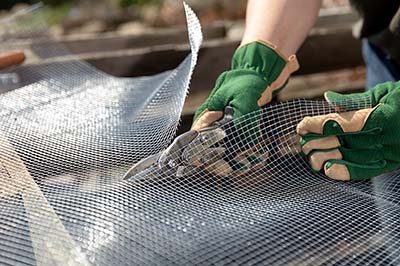-

Explore creative DIY garden projects for growing fruits, herbs, and vegetables in Georgia.
- Here are several DIY garden projects that can help transform your backyard into a sustainable, beautiful space. These projects are designed with eco-friendliness and aesthetic appeal in mind, promoting sustainability while enhancing the natural beauty of your garden.
- Recycled wood, old bricks, or cinder blocks.
- Compost and soil mix.
- Mulch for paths (optional).
- Garden tools.
- Choose a Location: Pick a sunny spot in your backyard. Ideally, raised beds should get 6-8 hours of sunlight.
- Build the Frame: Use recycled wood, old bricks, or cinder blocks to build the bed. Make sure the height is at least 12-18 inches.
- Fill with Soil: Mix compost with topsoil and fill the bed. The raised design improves drainage, which is especially important in Georgia’s clay-heavy soils.
- Plant Your Garden: Raised beds are perfect for vegetables, herbs, or flowers. Consider planting companion plants to promote biodiversity and natural pest control.
- Add Mulch: Surround the raised bed with mulch to prevent weeds and retain moisture.
- Promotes recycling and reduces landfill waste by reusing materials.
- Enhances soil health and allows you to plant in areas where the native soil may not be ideal.
- Wooden pallets, wire mesh, or a plastic bin (for the compost structure).
- Shovel or pitchfork.
- Browns (dried leaves, straw) and greens (vegetable scraps, grass clippings).
- Water (to moisten the pile).
- Build or Buy a Bin: You can make your own compost bin by securing wooden pallets or using wire mesh, or buy a plastic compost bin. Ensure it has good ventilation.
- Start Layering: Alternate layers of browns and greens. Browns provide carbon, while greens supply nitrogen.
- Turn the Pile: Every week or two, turn the pile to aerate it and speed up decomposition.
- Moisten as Needed: Keep the pile damp, like a wrung-out sponge, but not too wet.
- Use the Compost: After 2-3 months, your compost should be ready to use. Spread it around your garden beds to improve soil fertility.
- Reduces household waste and reliance on synthetic fertilizers.
- Builds healthy soil that retains moisture and supports beneficial microorganisms.
- A large food-grade barrel or rain barrel.
- Mesh screen (to keep debris out).
- PVC pipe and downspout diverter.
- Spigot.
- Concrete blocks (optional, for elevating the barrel).
- Choose a Location: Place your rain barrel underneath a downspout. You can elevate it on concrete blocks to make it easier to fill watering cans.
- Install the Diverter: Attach a downspout diverter to your existing gutter system, which will channel water directly into your barrel.
- Add a Mesh Screen: Cover the top of the barrel with a mesh screen to filter out leaves and prevent mosquitoes from breeding.
- Install the Spigot: Drill a hole at the bottom of the barrel and attach a spigot for easy access to the water.
- Water Your Garden: Use the collected rainwater to water your garden, reducing your reliance on municipal water.
- Conserves water by reusing natural rainfall.
- Reduces runoff, which can carry pollutants into storm drains.
- Native plants (such as milkweed, coneflower, black-eyed Susan, bee balm).
- Mulch.
- Planting tools (shovel, gloves).
- Watering can or hose.
- Select Native Plants: Choose plants that attract pollinators and are native to Georgia, such as Georgia aster, purple coneflower, and butterfly weed. Native plants are well-adapted to local climate conditions.
- Prepare the Soil: Loosen the soil and remove any weeds. Native plants generally require little fertilizer, making them low-maintenance.
- Plant in Groups: Pollinators are more attracted to larger groups of flowers, so plant in clusters rather than single plants.
- Add Mulch: Mulch around the plants to retain moisture and suppress weeds.
- Create Water Sources: A shallow dish of water with stones for landing provides a drinking station for pollinators.
- Supports biodiversity by attracting beneficial pollinators.
- Reduces the need for chemical pesticides and fertilizers, as native plants are naturally adapted to the local environment.
- A wooden pallet, metal trellis, or recycled wood.
- Planting pots or fabric pockets.
- Soil and plants (herbs, small flowers, or succulents).
- Drill and screws.
- Choose Your Structure: Repurpose a wooden pallet, an old ladder, or use a trellis for your vertical garden frame.
- Add Plant Pockets or Pots: Attach planting pots or fabric pockets securely to the structure. You can use screws or strong adhesive for this.
- Fill with Soil: Add soil to the pockets or pots, leaving enough space for root growth.
- Plant Your Garden: Choose compact plants like herbs, succulents, or small flowering plants. Vertical gardens are also perfect for strawberries or small lettuces.
- Water and Maintain: Water regularly, as vertical gardens may dry out faster than ground-level beds. Ensure that the plants at the top get enough water, as it may drain to the bottom.
- Saves space and uses less soil and water.
- Great for growing food or plants in small areas, reducing the need for transporting store-bought produce.
Install Raised Garden Beds Using Recycled Materials
Overview:
Raised garden beds allow you to have better control over the soil quality and drainage while also making gardening more accessible. Using recycled materials to construct the beds adds a sustainability angle and reduces waste.Materials Needed:
Steps:
Sustainability Benefits:
Create a Compost Bin for Organic Waste
Overview:
Composting is a great way to reduce household waste and create nutrient-rich soil for your garden. By turning food scraps and yard waste into compost, you can enrich your garden beds with organic matter that improves soil structure, drainage, and fertility.Materials Needed:
Steps:
Sustainability Benefits:
Build a DIY Rainwater Harvesting System
Overview:
Conserve water and reduce your water bill by creating a simple rainwater harvesting system. Collecting rainwater can help reduce runoff, conserve municipal water, and provide your plants with untreated, mineral-rich water.Materials Needed:
Steps:
Sustainability Benefits:
Build a Pollinator Garden with Native Plants
Overview:
Creating a pollinator-friendly garden helps support local ecosystems and encourages biodiversity. By planting native Georgia plants, you can attract bees, butterflies, and birds, while also reducing the need for extra watering and fertilizers.Materials Needed:
Steps:
Sustainability Benefits:
Build a DIY Vertical Garden for Small Spaces
Overview:
Vertical gardens are a great solution for small spaces, patios, or urban backyards. By growing plants vertically, you can maximize your gardening space and create a lush, green focal point. Use recycled or sustainable materials to build your vertical garden for an added eco-friendly touch.Materials Needed:
Steps:
Sustainability Benefits:
These DIY projects not only beautify your backyard but also contribute to a sustainable lifestyle. They incorporate eco-friendly practices, support local ecosystems, and encourage the use of recycled materials. Each project is designed to appeal to gardeners looking to make environmentally conscious choices while maximizing the functionality and aesthetic appeal of their outdoor space.
-

Basil
With its fragrant aroma and bright green leaves, basil is a staple herb in many types of cuisine, in Georgia, basil is grown in a variety of varieties, from sweet Genovese to spicy Thai basil. More
-

Rosemary
In Georgia, rosemary is grown in gardens and farms throughout the state, where its fragrant leaves are harvested and used in a variety of dishes. More
-

Thyme
A member of the mint family, thyme is a delicate herb with a subtle, earthy flavor. In Georgia, thyme is grown in a variety of varieties, from common thyme to lemon thyme. More



















 DIY GARDEN PROJECTS
DIY GARDEN PROJECTS gagarden.com/blog.html
gagarden.com/blog.html